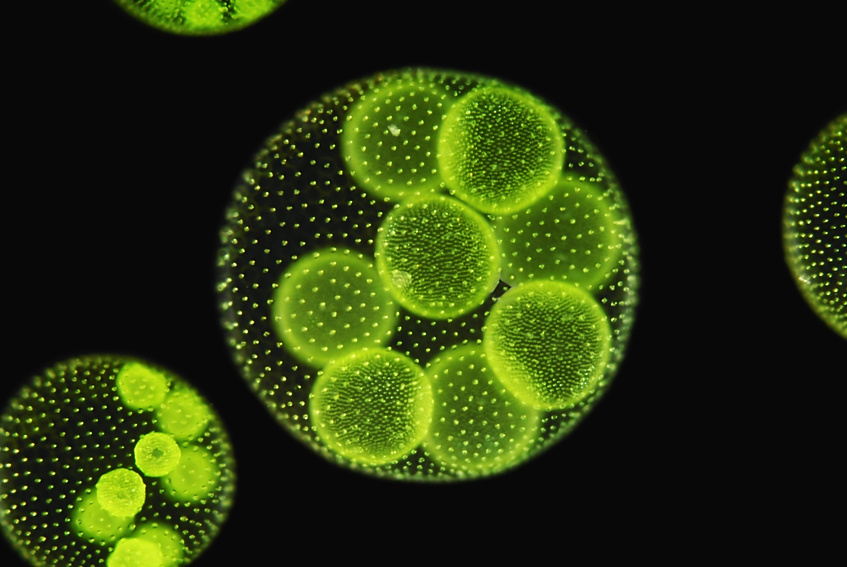What is life? Project funding of 9.8 million euro for the natural and life sciences
What are the basic principles of life? Seven research groups seeking answers to this question will receive around 9.8 million euro from the Volkswagen Foundation. Their scientific projects focus among others on embryonic development, nerve cell activities and the conversion of CO2 into organic compounds.
What is life? This question is at the heart of the funding initiative with which the Volkswagen Foundation supports research at the interface between the natural and life sciences. The required approach is assuming new significance as the formerly clear distinction between living organisms and non-living chemical and physical systems is becoming increasingly blurred. New methodological approaches are opening up, innovative fields of research such as synthetic biology or the fields of artificial intelligence and robotics are helping to gain new insights into the origin and development as well as the principles and characteristics of life.
A total of 95 applications for project funding were submitted in the second round of the initiative titled "Life? - A Fresh Scientific Approach to the Basic Principles of Life". They encompassed both individual projects as well as integrative and international cooperation. At its summer meeting, the Board of Trustees of the Volkswagen Foundation selected seven excellent proposals, which will now be supported with a total of 9.8 million euro.
Four granted projects are described in detail in an exemplary manner:
The Spark of Life: Initiation of Transcription in Embryos, and Recapitulating such in Synthetic Nuclei (rd. 1,5 Mio. Euro; Max-Planck-Institut für molekulare Zellbiologie und Genetik, Dresden)
The project focuses on the moment an embryo takes over control over its development and starts to use the instructions encoded in its DNA. The research groups aim to determine the physical principles that are involved in sparking life in the embryo and determine how the spark of life results in all other activities that underlie embryonic development.
We are Many – in Search of Principles that Enable Multicellular Life (rd. 1,4 Mio. Euro; Max-Planck-Institut für molekulare Zellbiologie und Genetik, Dresden; University of Oxford, GB; Stanford University, USA)
With the interdisciplinary project the researchers tackle the question of how cells organize into organisms as "societies of cells". How do the myriad cells within a single animal cooperate or compete with each other, and how are potential conflicts between them resolved to produce functioning, healthy "individuals"? With the help of the planarian worm – an extraordinary model organism having very large numbers of highly potent stem cells – the international research team will obtain new insights into the existence of multi-cellular life.
Bringing Inorganic Carbon to Life with Artificial CO2-Fixation in a Minimal Cell (about 1.5 million Euro, Max Planck Institute for Terrestrial Microbiology, Marburg, University of Marburg, J. Craig Venter Institute, USA)
Designer cells, also called minimal cells, should be reprogrammed to develop a completely new way to bind and convert CO2. This new pathway can serve as an alternative to naturally occurring CO2 conversion pathways, such as those occurring during plant photosynthesis. The new routes of CO2 make it easy to produce organic compounds that we need in our daily lives, such as the production of food, fuel and pharmaceuticals directly from CO2. The fundamental property of life, to convert inanimate carbon into organic compounds, is therefore to be researched, imitated and even reinvented.
Genome SCRaMbLEing: An Experimental Approach to Understand Life's Organization at a Molecular Level (about 1.3 million Euro, European Molecular Biology Laboratory, Heidelberg, University of Manchester, UK)
Why is the genome of a living being organized as we find it in nature? Why have genomes formed as they are - and how could they have formed differently? These principles, which regulate the organization of life on a fundamental level, are the focus of the research project. Today, whole genomes can be replaced by man-made DNA, which can be used to explore what can be achieved with these building blocks of life. Using a process called SCRaMbLE, the genome of the fully synthetic yeast Saccharomyces cerevisiae 2.0 can be completely redesigned on demand. This option is used by the research group to study various processes that are stored in the DNA of an organism. For example, they want to clarify when genomes will become so different that new species will emerge.
The next deadline for applications for funding within the initiative is October 9, 2018. Researchers can apply for up to 1.5 million euros over a period of up to five years.
Link to the funding initiative "Life? - A Fresh Scientific Approach to the Basic Principles of Life".

